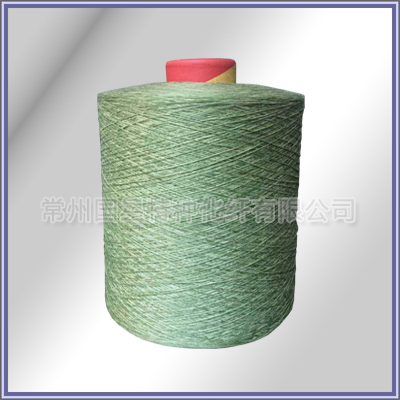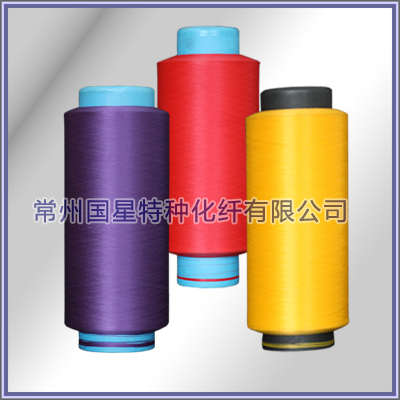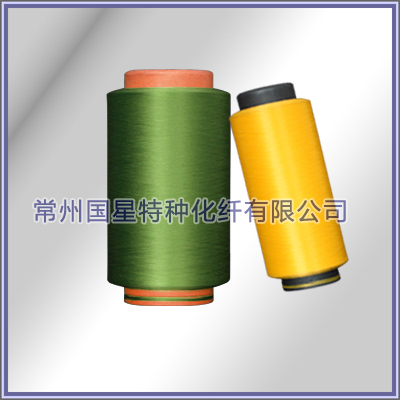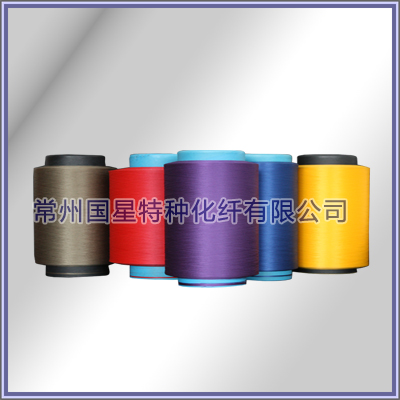At present, the domestic epidemic situation is gradually being controlled, and the reopening of the professional market has been further promoted, but it will take some time for the domestic market to fully recover. According to the survey data of the China Textile Federation's Distribution Branch on 101 national key textile and apparel professional markets on March 10, the market opening rate of the single market has reached 86.1%, which is an increase of 1.9 percentage points from the previous week's survey. 72,000, accounting for 50.8% of the total number of shops in the market under normal circumstances, an increase of 6.5 percentage points from a week ago, and more than half of the shops have resumed business. So, with the resumption of work in the textile and apparel professional market, how is the situation of small, medium and micro enterprises?
�� Yunnan Bay International Trade City:
Some companies disappear, and others work hard to survive
"In the past few days, 8 companies will never ask me for a worker again." Said Tang Yanping, director of Kunming Yonghe Labor Services, Yunnan. With her helplessness, some small, medium and micro enterprises disappeared under the new crown pneumonia epidemic.
Tang Yanping's company provides labor dispatch services for hundreds of small, medium, and micro enterprises across China. From the recent contact with her partner companies, some small and medium enterprises have difficulty in operating after resuming production and resuming production. "The pressure on hard expenditures is high. In addition to labor costs, There are also rents, utilities, etc., plus working capital is stretched. "
"Spring was the peak season of wholesale business in the past years. This year was delayed due to the epidemic situation." The Zhang Zhens and his wife have been engaged in the wholesale business of knives and toys in Luoyang Bay International Trade City for 6 years. . After the store opened, the couple stayed in two stores and fired six employees. The Luojing Bay International Trade City where they are located is the largest comprehensive commodity wholesale trading market in southwest China. Last year, the commerce and trade city had nearly 30,000 corporate merchants, about 150,000 employees, and an average daily flow of 200,000 people.
Today, the overall return rate of merchants is close to 80%, but the huge market is still empty.
Data shows that the private economy, mainly small, medium and micro enterprises, has contributed 60% of the GDP of the Chinese economy, 70% of technological innovation achievements, and 80% of urban labor employment. The stability of small, medium and micro enterprises is related to the stability of economy, employment and society.
Zhang Zhen said that it is encouraging that the country has recently introduced policies and measures including finance and taxation to support small and medium-sized enterprises to overcome difficulties. "The government is also increasing its investment in infrastructure construction to drive the economy back on track."
�� In Xinluojiaowan International Trade City, most of the company's merchants have online stores. In the past few years, the physical wholesale business has been good, coupled with the fierce competition in e-commerce, merchants are reluctant to spend too much time and funds to run online stores. Now in the trade city, the reporter saw that many merchants have tried to sell goods on the live broadcast platform.
�� Keqiao Textile City, Shaoxing, Zhejiang:
Passenger traffic fell by 90%, and over 60% of corporate orders were cancelled
�� Located in Keqiao District, Shaoxing City, Zhejiang Province, China Textile City is the largest textile distribution center in the country. Although it has been more than half a month since the market reopened, customers affected by the epidemic have fallen by nearly 90% from the same period of last year.
During the epidemic, the recent business hours of China Textile City were adjusted from 10 am to 4 pm. Although more than 80% of the business households have opened their doors to welcome customers, compared with the 100,000 people per day in the past, the number of business openings for 10 days is only 10,000.
If the customer does not come, there is no new order. According to a local survey report on the textile industry, 78.4% of the companies said that market orders had decreased; 64.8% of the companies reported that existing orders were cancelled by customers. Lianmei, the operator of China Textile City, has opened a store in the market for 20 years, and 60% of its customers accumulated over the years come from Wuhan. The rent for a shop alone will be more than 1 million yuan a year. However, in the face of these days, Fei Lianmei said that he has given up his business in spring and summer.
Shaoxing Yongsheng Industry and Trade Co., Ltd., a local textile leader that has also been operating for more than 20 years, has set up 8 negotiation tables in the exhibition hall full of new products. In the past, customers who came to the door had to wait in line to use the tables and chairs, but this year, these tables and chairs have become "cold benches". The company's chairman, Fu Guoqing, frankly said that the turnover is now reduced by half compared with last year, which has a great impact on the company.
However, it is worth noting that although there are fewer orders, the design department of Kesheng Industrial and Trade is more busy than usual. Designers who should have started designing this autumn and winter models are busy designing the spring and summer models of 2021. Within a few days of returning to work, Fu Guoqing's table was filled with new designs from the design department. It turned out that because of the downturn in clothing sales downstream, orders that could have been fine-tuned by customer feedback were gone. In order to cope with new needs that may arise at any time, Fu Guoqing went ruthlessly and designed the creative ideas reserved in 2021. For a sample, the design cost will be more than 5,000 yuan, and the R & D costs will increase by more than 500,000 yuan. From this calculation, it is expected that the company's design fee for the whole year will double from last year. "During the epidemic, companies need to open up more ideas. When people are not willing to do it, we pay more. Adversity is dangerous but also an opportunity." Fu Guoqing said. Opportunity has always favored only those who are prepared. At present, both the recovery rate of China Textile City and the recovery rate of textile printing and dyeing companies are close to 90%, and Keqiao has also specifically issued 21 opinions on the implementation of stable economic and stable development and 5 implementation rules to support the resumed production and resumed production of enterprises. Stimulate the confidence of businesses and operators. Ke Yan District Executive Deputy District Chief Sun Yan said: "Confidence is really more valuable than gold now, and the government must make enterprises feel real support. We will help enterprises to boost confidence and overcome difficulties together."
Industry experts point out that at present, the popularity is not strong, the orders are insufficient, and the supporting enterprises' capacity cannot keep up, and the major markets are facing considerable pressure. Facing the severe situation, enterprises should take the initiative to find a turnaround in the crisis. "The production capacity can't keep up, the creative design must be planned first; orders in the first quarter are affected, and customer demand in the second half of the year must first be docked. Enterprises need to deal with today's temporary dilemma through the layout of tomorrow's market. One step ahead To be stable and far-reaching. "
Guangzhou Textile Trading Park:
The return rate on the first day is about 40%, and orders are down by about 30%
On March 9, Guangzhou Textile Trading Park resumed. On the first day of the resumption, the reporter learned from the general manager of the management unit, Guangzhou United Exchange Park Operation Investment Co., Ltd. Yang Zhixiong that the situation on the first day of the resumption was better than expected. "According to statistics, the number of people returning to work today is about 4,000 to 5,000, and the rate of returning to work is 40% to 50%." He predicts that the rate of returning to work will be 80% by the end of March. Yang Zhixiong introduced that Guangzhou Textile Trading Park is no longer a traditional fabric trading park. More, the core of the trading park is "fashion, R & D and design". Therefore, the flow of people in the on-site transactions in the park will not be very high. This is one of the reasons why Guangzhou Textile Trading Park was the first to resume the market in the Zhongda Textile Business District. Creating Guangzhou Fashion Landmark is the development direction of Guangzhou Textile Trading Park. "At present, the park has completed the reconstruction of two-thirds of the area, introducing designers, pattern makers, fashion agencies, and service agencies in the field of clothing." Yang Zhixiong said that the park will invest more funds to upgrade existing buildings this year Introduce more formats and services. A person in charge of a merchant named Chen told Nandu reporters that the outbreak affected offline and online business. Cannot open offline, online customers cannot ship after placing an order. Compared with the same period in previous years, the order volume has dropped by about 30% to 40%. "The inability of the factory to delay production has led to a delay in the pace of business." During the epidemic, he also prepared enough supplies for prevention and control, and will disinfect the store 3 to 5 times a day. "If the passenger flow is high, the number of disinfections will increase."
Guangzhou Zhongda Textile City:
Customer traffic has plummeted, and recruitment has become more difficult
After the Guangzhou Textile Trading Park took the lead in resuming the market, other markets in the Zhongda Textile Business District also resumed. In the past, the Guangzhou Zhongda Light Textile Market, which opened on the tenth day of the first month, finally opened its doors on March 10.
The clothing industry circulates such a sentence, "The national fabrics look at Guangdong, the Guangdong fabrics look great." As China's largest textile and apparel distribution center, the China Textile University has 59 professional malls, more than 23,000 businesses, and more than 15 migrant workers Ten thousand people. Mainly engaged in various fabrics, accessories, home furnishing supplies, etc., with more than 100,000 categories.
Pan Ru, a shop owner of Jiuzhou Textile City, told reporters that the entire business district will resume work in batches, and a number of malls will start on March 11. According to her observations, the opening rates of several malls that have been opened have reached 90%, but the daily business hours have decreased, and the overall passenger flow has been reduced by half compared to the previous one.
In the month when work was delayed, Pan Ru lost nearly RMB 150,000. "The customers we face are mainly clothing companies, Taobao shop owners, and others who come to pick fabrics. They must choose the fabrics in the field to choose. Because the store cannot be opened, it means that they cannot take orders normally." Pan Ru said. For old customers, they will take orders online, but they still cannot save much performance. "The proportion of these customers is not large. We want to reach new customers."
Tong Lintao is also passive. His store is on the second floor of Guangzhou International Textile City. Due to the high business volume, he hired six employees a year ago, but now only two of them are reworked, all of whom are natives of Guangdong. At present Lin Tao still has to worry about how to recruit workers. "There are 150,000 migrant workers from Zhongda Textile Business Circle, of which one-third are from Hubei. Most of them come from Jingzhou, Xiantao and other places, because they cannot return now . "
In fact, every time after the Spring Festival, the Chinese textile market will face difficulties in recruiting workers. Lin Tao revealed that due to the impact of the epidemic this year, it will be difficult to recruit workers because Hubei workers are unable to return to the country. "Now there is not much passenger traffic, I can barely hold it, and slowly (passenger flow) is coming up. Every shop wants to use people, everyone will increase 20- % ~ 30% salary to recruit talents. "At present, in Guangzhou International Textile City, many stores are ready to post job advertisements in advance to prepare for the battle.
It can be seen from the many small and medium-sized enterprises in the textile professional market that the family base is weak, the transformation is difficult, the confidence is insufficient, the financial pressure, the number of customers is drastically reduced, and the recruitment is difficult ... Under the new crown pneumonia epidemic, small and medium-sized enterprises face difficulties in survival, but They are working hard to resume work, alleviate difficulties, and strive to "survive" in self-help and other rescue, waiting for "spring."
Disclaimer: This article originates from the Internet and the copyright belongs to the original author; if there is any infringement, please inform it in time and delete it after verification.
Changzhou Guoxing Special Chemical Fiber Co., Ltd. specializes in production and operation: polypropylene air change yarn, polypropylene fine denier yarn, polypropylene fine denier DTY yarn, polypropylene fine denier ATY yarn, polypropylene super fine denier yarn, polypropylene fine denier FDY yarn, polypropylene filament, polypropylene Puqiang yarn, polypropylene FDY yarn, polypropylene hollow yarn, polypropylene elastic yarn, polypropylene air change yarn, polypropylene draft yarn, antibacterial polypropylene yarn, polypropylene air change yarn, polypropylene filament yarn, polypropylene elastic yarn.
Contact: Mr. Jiang
Mobile: 18915888888
Contact: Mr. Shi
Mobile: 13306121773
Phone: 0519 86266888
Fax: 0519 86268808
Address: No. 3 Zhaiqiao Industrial Concentration Zone, Qianhuang Town, Wujin District, Changzhou City, Jiangsu Province
Chinese official website: http://www.czgxhx.com
English official website: http://www.gxfibre.com
E-mail: gx@gxfibre.com

 +86-519-86266888
+86-519-86266888 gxhx888@126.com
gxhx888@126.com



